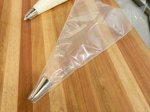Cow
Senior Member
- Location
- Eastern Oregon
- Occupation
- Electrician
We're on a job right now with probably 100+ sealoffs mostly 3/4" with a few larger up to 3". We used the combination sealoffs for everything, the kind that do both horizontal/vertical. Just wondering if you guys had any tricks to help speed up the process? I'll usually cut the top off a gatorade jug or something similar and mix inside that, then figure a way to get it poured. It'll be kind of a pain this time on the vertical sealoffs since they're the combination type though...wasn't my idea, I just install 'em and pour 'em.
I'm thinking of trying a large syringe, 35-50cc like I've used on cows with a short piece of tube on the tip if necessary to get it right where I want it?
If this stuff came premixed in caulk tubes that would be SWEET!!
I'm thinking of trying a large syringe, 35-50cc like I've used on cows with a short piece of tube on the tip if necessary to get it right where I want it?
If this stuff came premixed in caulk tubes that would be SWEET!!


